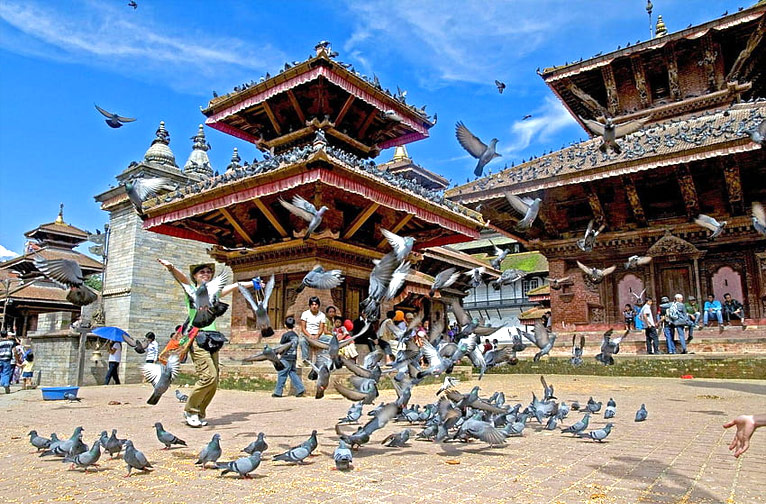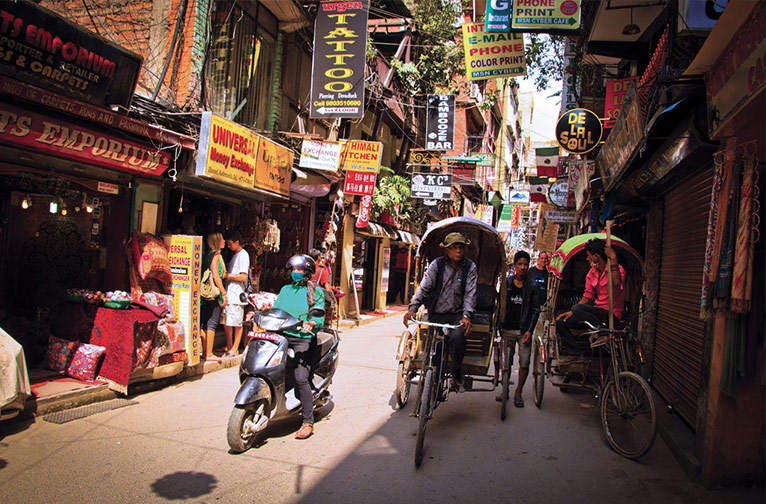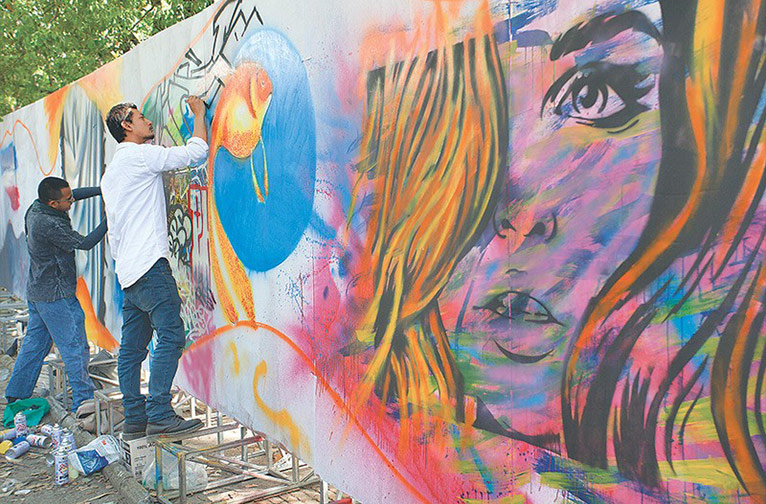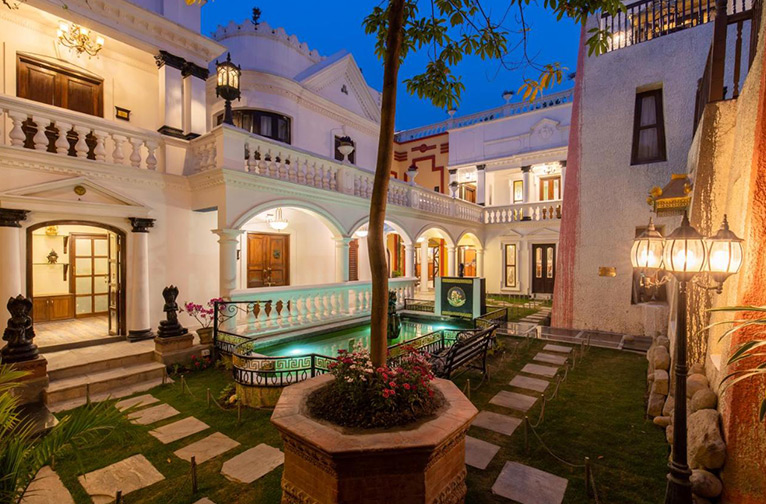The dictionary describes’ Serendipity’ as ‘good luck in finding valuable things unintentionally’ in the context of the fairy tale characters who were always making discoveries through chance. Well, here’s your chance of doing just that on a solo trip to Nepal.
Fed up with bickering family and friends on your precious holiday last time? Maybe you need to now plan one just on your own– and look forward to some impressionable serendipitous moments in this exotic Himalayan kingdom.
Lose yourself in the anonymous hubbub of a street café in Kathmandu. Measure out your zen mood over coffee and croissants and watch the people come and go… You could be anywhere in Europe, because the national capital is a huge draw for the international community attracted by Nepal’s fabulous extreme adventure and cultural offerings. Bend you ear to the chit -chat around you and the words ‘Everest’ or Annapurna Trek’ are sure to keep popping up. It might take you back to that moment, when flying into Kathmandu you would have heard the pilot directing your attention to the left, from the Plexiglass window of which you might get lucky and get your first (fleeting!) glimpse of the mighty Peak, the world’s highest.


Kathmandu city is chock-full of unexpected experiences. Espying a brochure on a local art show, lying on a vacant table could well drive you out on the streets to discover Kathmandu’s amazing street art culture, which you might not be aware has been a growing movement for years since 2011.
Following some intrepid tourists, you could get lost amongst the atmospheric tumbledown buildings area near the Bagmati at Bhaisighat, and chance upon remnants of some vibrant murals of a street art project carried out here way back in 2014. Bet you didn’t know this has carried over to tourist, and very appropriately artisanal hub, Patan as well? Wandering around Patan’s residential area Kupondole through Pulchowk, you might even come upon an unforgettable mural done by some unknown artist.
On a rickshaw ride you might be tempted to hop off at the Kips Tattoo Inn run in Boudha in Kathmandu by local artist Sangay Thinley Lama. You could even surprise yourself getting inspired to get a tattoo having observed the satisfied looks of some clients. If you are lucky, you may even meet Sanjay Lama who was one of the four artists involved in painting the massive mural at Ratnapark as a tribute to the sacrifices and contributions of the Covid warriors who lost their lives during the pandemic.


Discover the less trumpeted charms to the tourist community of the Baber Mahal Revisited complex and its replicas of the Rana palaces. This serene complex, away from the clamour and noise of the Thamel, is awash with restaurants and shops, and a huge draw for Kathmandu’s high-stepping society. Don’t get swayed just by the gourmet and retail extravaganzas here. Discover the transformation story of how this historical property, a part of the Thapathali Durbar complex, offers a unique opportunity to pull back the veil on the European Neoclassical and Baroque era-inspired Rana architecture, dating to the years of rule of the Rana dynasty during the 1800s to the mid-1900s.
There’s something else you might discover unexpectedly about the Rana era and the connection with Thapathali Durbar complex. Nepal, during India’s British rule days even served as a refuge for high-profile Indian political fugitives. Rani Jindan Kaur, the youngest queen of Punjab’s legendary Maharaja Ranjit Singh, fled India from the British, and was provided asylum in Charburja Durbar palace in Thapathali Durbar Complex in Kathmandu by the Jung Bahadur Rana. She was Queen Regent to Ranjit Singh’s 10-year-old heir, Maharaja Duleep Singh, but was considered persona non grata by the British who wanted to annex Ranjit Singh’s kingdom. Charburja Durbar was seriously damaged during the 1934 Nepal–Bihar earthquake and eventually fell into ruin; a maternity hospital has come up here now. Rani Jindan’s Sikh companions were settled in the Nepalgunj area. Their descendants can be found living even today in Sikhanpura, Jamunaha and Bankatwa villages where they have fiercely retained their Sikh identity, setting up Gurdwaras and the like.


Begum Hazrat Mahal, the warrior queen of Awadh’s Nawab Wajid Ali Shah, escaped Lucknow from the British during the Mutiny 1857 and found asylum in Nepal. There was gossip too of Nana Sahib one of the key figures of the Revolt of 1857, escaping the clutches of the British with a bounty of Rs 93,000 on his head to Nepal. Bhutanese oral history reveals that Nana Saheb later to Bhutan where he was given a room at the Trongsa Dzong in the court of Druk Desi Jigme Namgyal (1825-1881).
This is but a tiny window to the intriguing little gems that make your ‘Solo Serendipity’ experiences an unforgettable reason to return and dive deeper into hidden Kathmandu to enjoy by yourself. On your next visit, come alone again and abandon yourself to the adventurer in you to chance upon even more exciting discoveries of delight.